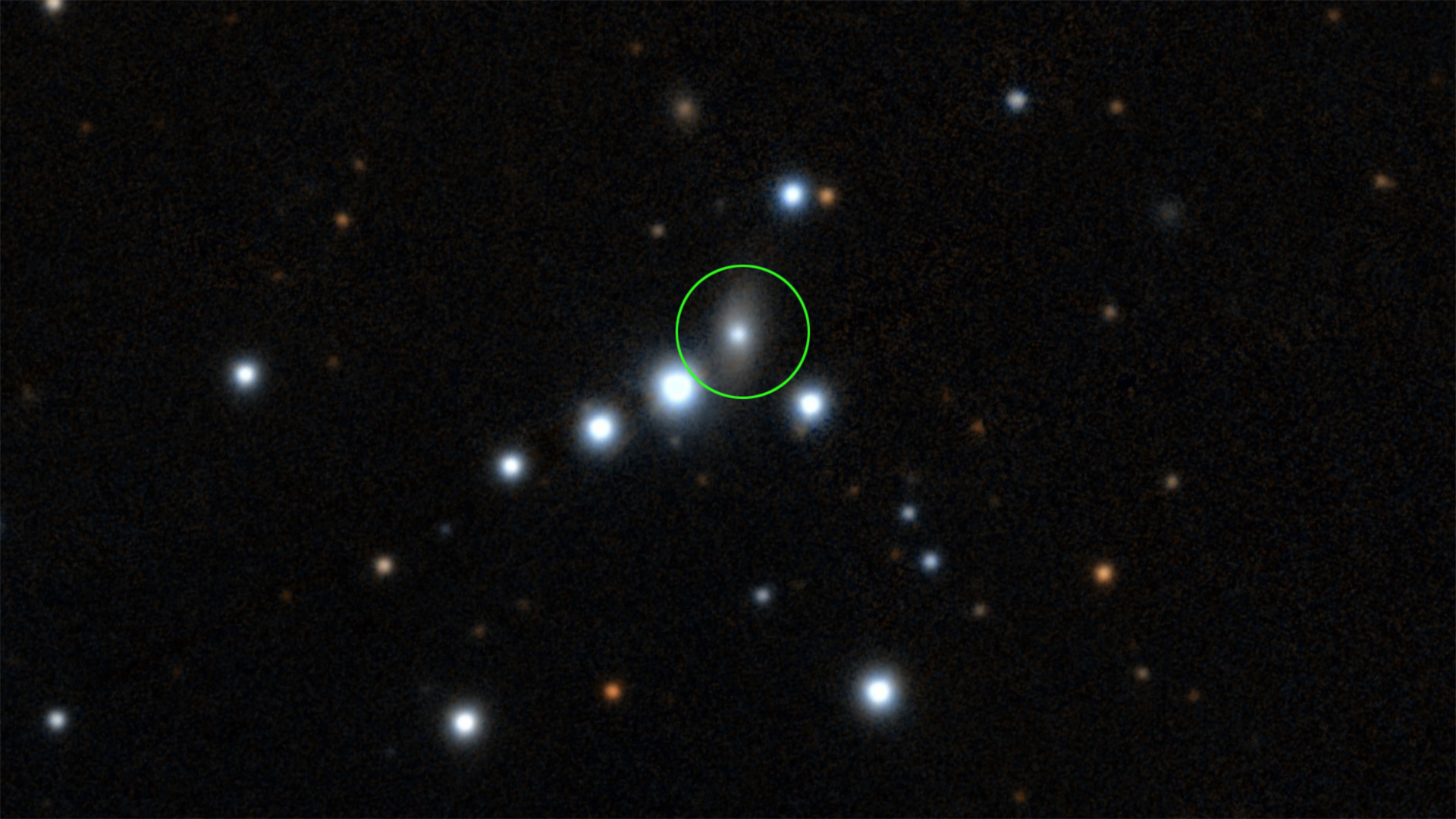Magnetic Flip Drives Flare-Up of Monster Black Hole
Explore the unusual eruption of 1ES 1927+654, a galaxy located 236 million light-years away in the constellation Draco. A sudden reversal of the magnetic field around its million-solar-mass black hole may have triggered the outburst.
Credit: NASA’s Goddard Space Flight Center
Music: "Water Dance" and "Alternate Worlds" from Universal Production Music
Watch this video on the NASA Goddard YouTube channel.
Complete transcript available.
A rare and enigmatic outburst from a galaxy 236 million light-years away may have been sparked by a magnetic reversal, a spontaneous flip of the magnetic field surrounding its central black hole.
At the end of 2017, a galaxy called 1ES 1927+654 brightened by nearly 100 times in visible light. When NASA's Neil Gehrels Swift Observatory first examined the galaxy in May 2018, its UV emission was also 12 times higher but steadily declining, indicating an earlier unobserved peak. Then, in June, the galaxy’s higher-energy X-ray emission disappeared, later reappearing in October.
An international science team has linked these unusual observations to changes in the black hole’s environment that likely would be triggered by a magnetic switch.
Most big galaxies, including our own Milky Way, host a supermassive black hole weighing millions to billions of times the Sun's mass. When matter falls toward one, it first collects into a vast, flattened structure called an accretion disk. As the material slowly swirls inward, it heats up and emits visible, UV, and lower-energy X-ray light. Near the black hole, a cloud of extremely hot particles called the corona produces higher-energy X-rays. The brightness of these emissions depends on how much material streams toward the black hole.
The scientists think a magnetic reversal, where the north pole becomes south and vice versa, best fits the observations. The field initially weakens at the outskirts of the accretion disk, leading to greater heating and brightening in visible and UV light. As the weakening extends toward the black hole, the field can no longer support the corona and the high-energy X-rays vanish. As the magnetic field gradually strengthens in its new orientation, it restores the corona and the galaxy eventually settles into its pre-outburst state.

En español. Explora la inusual erupción de 1ES 1927+654, una galaxia ubicada a 236 millones de años luz de distancia en la constelación Draco. Una inversión repentina del campo magnético alrededor de su agujero negro, que posee una masa equivalente a millones de soles, pudo haber desencadenado el estallido.
Crédito: Centro de Vuelo Espacial Goddard de la NASA
This sequence illustrates various features of the galaxy's outburst, from its dramatically increased brightness in visible and UV to the loss and recovery of the corona, the source of high-energy X-rays.
Credit: NASA’s Goddard Space Flight Center

This illustration shows the accretion disk, corona (pale, conical swirls above the disk), and supermassive black hole of active galaxy 1ES 1927+654 before its recent flare-up.
Credit: NASA/Sonoma State University, Aurore Simonnet

This cartoon illustrates the magnetic reversal interpretation of the eruption at the center of the active galaxy known as 1ES 1927+654. Yellow lines depict the initial direction of the magnetic field, while orange lines indicate the reversed polarity. In late December 2017, the accretion disk brightened up by to 100 times in visible light, a result of increased “feeding” by the supermassive black hole – possibly triggered by a change of magnetic polarity in the outer disk. In August 2018, the reversed magnetic flux reached the inner accretion disk, causing the corona – and the high-energy X-rays it produced – to vanish. In October 2018, the X-rays returned, indicating that the corona had been rebuilt, but it gradually became more intense, reaching a peak in November 2019. During this period, the magnetic field strengthened in its new orientation, and a higher flow of matter could reach the black hole. Present day: The black hole has settled into its 2011 pre-eruption state, but with a magnetic field of opposite polarity.
Credit: NASA's Goddard Space Flight Center/Jay Friedlander
Animated version of the above.
Credit: NASA's Goddard Space Flight Center/Jay Friedlander
For More Information
See the following sources:
Credits
Please give credit for this item to:
NASA's Goddard Space Flight Center. However, individual items should be credited as indicated above.
-
Producer
- Scott Wiessinger (KBR Wyle Services, LLC)
-
Science writer
- Francis Reddy (University of Maryland College Park)
-
Artist
- Aurore Simonnet (Sonoma State University)
-
Illustrator
- Jay Friedlander (TRAX International)
-
Animator
- Scott Wiessinger (KBR Wyle Services, LLC)
-
Narrator
- Barb Mattson (University of Maryland College Park)
-
Scientist
- Sibasish Laha (UMBC)
Release date
This page was originally published on Thursday, May 5, 2022.
This page was last updated on Wednesday, May 3, 2023 at 11:44 AM EDT.
